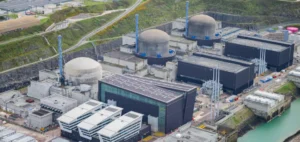Ontario is gearing up to address a significant increase in energy demand, projected to rise by 75% by 2050. According to the Independent Electricity System Operator (IESO), this growth is equivalent to adding four and a half times the size of Toronto to the grid. Key drivers of this surge include rapid population growth, the emergence of new industrial and technological facilities, and the electrification of transportation and industry.
To anticipate this demand, the provincial government has tasked Ontario Power Generation (OPG) to engage in community discussions regarding three key sites in Southern Ontario: Wesleyville in Port Hope, Nanticoke in Haldimand County, and Lambton in St. Clair. These sites, already zoned for electricity generation, offer existing infrastructure and strategic proximity to transmission networks.
Energy Planning and Community Engagement
The consultations aim to gauge local acceptance and explore potential benefits for affected communities. These include equity participation for Indigenous communities, funding for local infrastructure, and economic opportunities such as job creation and tax revenue. Projects will only be considered if communities demonstrate their willingness to participate actively.
Greg Rickford, Minister of Indigenous Affairs and First Nations Economic Reconciliation, stated that this expansion presents a unique opportunity to involve Indigenous communities in major energy and economic decisions. “We are ensuring that First Nations are active participants in creating a sustainable and prosperous energy future,” he said.
Strategic Sites for Energy Generation
– Wesleyville (Port Hope): This 1,300-acre site is located near the Pickering and Darlington nuclear stations in the Durham region.
– Nanticoke (Haldimand County): A former coal-generation site, it currently hosts a solar facility and offers existing transmission capacity, as well as rail and port access.
– Lambton (St. Clair Township): Another former coal-generation site, it provides reusable infrastructure, rail access, and a deepwater dock.
OPG emphasizes the importance of relationships with host communities and Indigenous Nations in advancing its projects. “We look forward to understanding the aspirations of these communities and working together toward a shared vision,” said OPG CEO Ken Hartwick.
Toward a Sustainable Energy Future
The government has already initiated several ambitious projects to meet energy needs through 2035, including Canada’s first small modular reactor (SMR) and the refurbishment of the Pickering Nuclear Generation Station. However, an additional 16,000 megawatts will be required to meet 2050 demand.
Minister of Energy and Electrification Stephen Lecce affirmed that Ontario’s energy vision prioritizes clean and reliable electricity from nuclear and hydropower. “We are planning to ensure affordable energy bills and stable power for generations to come,” he said.






















